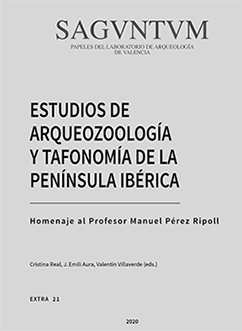Avifauna de la Cueva de Nerja (30,5-7,2 ka cal BP. Tafonomía, taxonomía, paleoclimatología y contextualización arqueológica
Keywords:
paleogeografía, paleoclimatología Abstract
Abstract
Cueva de Nerja has provided a diversified assemblage of birds. In this work the avian bones recovered at the Upper Palaeolithic, Mesolithic and Neolithic levels in the excavations led by F. Jordá Cerdá is analyzed. The identification of 11 orders, including 14 families and 16 taxa, allows to link their variability with the paleoclimatology and paleogeography of the site, affected by changes in the position of the coastline between 30.5 to 7.2 ka cal BP. The trends are related to the general economic changes for terrestrial and marine resources. The study of the cut-marks and fractures on different bones and species indicates that the assemblage has an anthropic origin. The results obtained provide data on the exploitation of different ecological environments and contribute to the knowledge about the use of birds during the Upper Palaeolithic, Epipalaeolithic-Mesolithic and Neolithic phases in the Iberian Mediterranean region.
 Downloads
Downloads
Downloads
Published
How to Cite
-
Abstract339
-
PDF (Español)209
Issue
Section
License

This work is licensed under a licencia de Creative Commons Reconocimiento-NoComercial-SinObraDerivada 4.0 Internacional.



